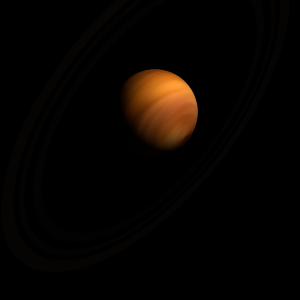|
|
Space Astro
|
Info for exoplanet "Ajet"
| Scientific (actual) data |
|---|
| Name | HD 221356 Ab |
| Planet status | Confirmed |
| Planet mass | 42.1 |
| Semi major axis | 317 |
| Discovered | 2012 |
| Updated | 2024-08-21 |
| Publication | Published in a refereed paper |
| Detection type | Imaging, Astrometry |
| Mass measurement type | Astrometry |
| Alternate names | GZA 1 b, HD 221356 D |
| Star name | HD 221356 A |
| Right ascension | 352.88° |
| Declination | -4.09° |
| Mag v | 6.49 |
| Star distance | 25.9454 |
| Star metallicity | -0.21 |
| Star mass | 1.1 |
| Star radius | 1.11 |
| Star sp type | F9/G0V |
| Star age | 0.149 |
| Star temperature | 5987 |
| Star alternate names | GZA 1 A, HR 8931, Koenigstuhl 3 A, KO 3 A |
| Wikipedia article | HD 221356 Ab |
Back
| |
| Fictional info (?) |
|---|
| Suggested name | Ajet |
| Planet type | Huge cold gas giant |
| Because of its rapid rotation, the planet's shape is that of an oblate spheroid (it has a slight but noticeable bulge around the equator). A prominent result is the "great blue spot", a giant storm that is known to have existed for centuries since it was first observed by radar. |
| Atmosphere | Sulfur dioxide | 45% |
| Methane | 41% |
| Molecular hydrogen | 6.7% |
| Krypton | 6.5% |
| Carbon dioxide | 0.17% |
| Atmospheric pressure | 0.6 bar |
 |
| No known satellites |
| Google search for Ajet |
|
Website by Joachim Michaelis
|
|
|
|